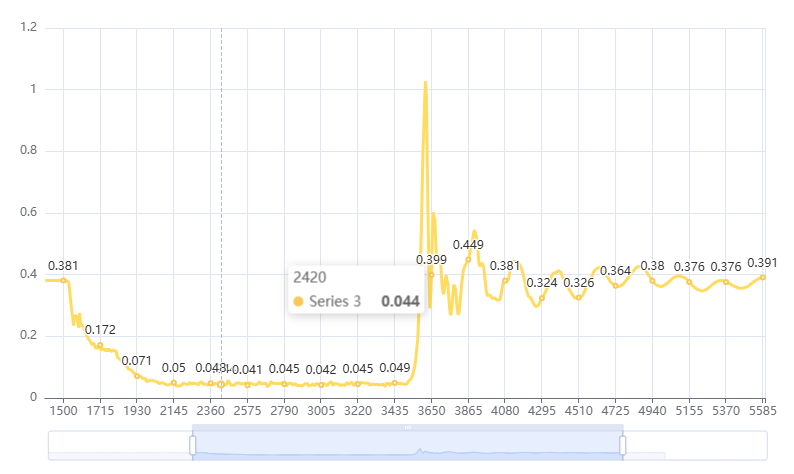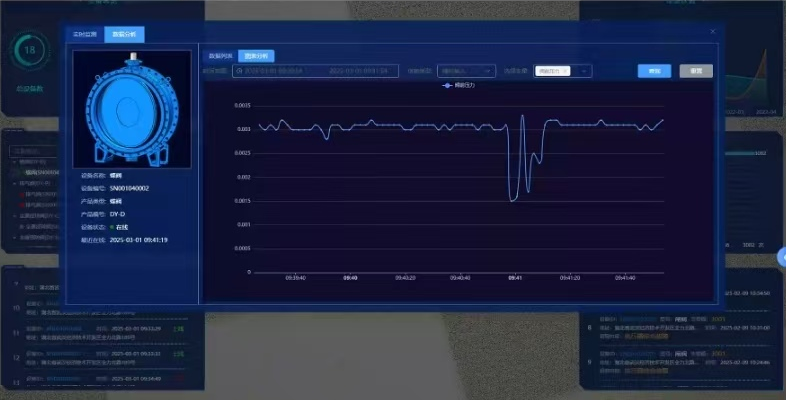About Us
Water Hammer Hazard: The "Ticking Time Bomb" Hidden in Pipelines
Introduction: What is Water Hammer?
In daily life, you may have experienced this: the moment you quickly turn off a faucet in the kitchen, a sudden "bang" echoes from the pipes. In the field of hydraulic engineering, this phenomenon is known as water hammer. Essentially, it is a sudden increase in pressure caused by a rapid change in fluid velocity. Typically, the quick closure of a valve or the abrupt shutdown of a pump can lead to the occurrence of water hammer.

Figure: Pressure Fluctuation Curve of Water Hammer in a Household Faucet
As shown in the image, the maximum pressure change during a water hammer event can be up to 2.5 times the normal water pressure. In everyday life, this might feel like the force of a punch. However, when it comes to large-scale long-distance water supply, drainage, and oil and gas transportation systems, the hazards posed by water hammer cannot be underestimated. It can pose a serious threat to the safety of infrastructure and even pose potential risks to personal safety. Therefore, delving into the causes of water hammer, clearly understanding its hazards, and exploring effective solutions are of paramount importance for ensuring the safe and stable operation of hydraulic engineering systems.
I. The Hazards of Water Hammer: An Invisible Danger
In the process of hydraulic engineering design, the phenomenon of water hammer can easily trigger a series of hazards, which are manifested as follows:
1. Pipe Rupture and Bursting
The high-pressure waves generated by water hammer are extremely powerful, and their pressure levels can potentially exceed the designed pressure limits of the pipeline. When this occurs, the pipeline may rupture or even experience more severe bursting. This not only leads to significant water waste but also poses a risk of environmental pollution. Particularly in older pipeline networks, where materials have deteriorated over time and their pressure resistance has weakened, the destructive force of water hammer becomes even more pronounced.
2. Damage to Valves and Equipment
The intense impact force produced by water hammer relentlessly affects various precision equipment within the system, such as valves, pumps, and meters. Under this impact, the sealing components of the equipment are prone to failure, and internal parts may also be damaged. This not only significantly increases maintenance costs but also severely disrupts the normal operation of the system, making it difficult for the entire hydraulic engineering system to function efficiently.
3. Structural Damage and Safety Risks
In extreme cases, the pressure waves caused by water hammer can travel along the pipeline to the building structures supporting the pipeline. The continuous action of these pressure waves may destabilize the building foundation, deform pipeline supports, or even cause partial damage to the structure. In areas where the supporting structures are inherently flawed or the buildings are aged, this risk is further amplified. For systems transporting hazardous fluids or operating under high pressure, pipeline bursts induced by water hammer can directly endanger the lives of on-site personnel, with unimaginable consequences.
II. Causes and Common Triggers of Water Hammer
1. Rapid Closure of Valves
When a valve is closed quickly, the flowing liquid comes to an abrupt halt, and its kinetic energy is rapidly converted into pressure energy within an extremely short time, generating shock waves. This is one of the primary triggers of water hammer.
2. Sudden Changes in Pump Operation
Sudden starts or stops of pumps can cause abrupt changes in liquid flow velocity, leading to the formation of pressure waves. This effect is particularly significant in long-distance transportation systems, where water hammer is highly likely to occur.
3. Insufficiencies in System Design
Design flaws such as the use of long straight pipelines, excessively high liquid flow velocities,not reasonable pipe diameters size, and unstable supporting structures can all increase the risk of water hammer to varying degrees.
III. How to Effectively Mitigate the Hazards of Water Hammer
To effectively reduce the damage caused by water hammer to hydraulic engineering systems, engineers can take the following measures from multiple dimensions:
1. Optimize Design Solutions
Rational Selection of Pipe Diameter: Using pipes with larger diameters can reduce fluid velocity, thereby weakening the intensity of shock waves. Under the same flow rate, increasing the pipe diameter lowers the velocity, reducing the impact force generated when kinetic energy is converted into pressure energy.
Careful Pipeline Planning: Arrange pipeline direction changes as smoothly as possible, avoiding sharp bends. Sharp bends cause significant changes in fluid momentum, while gentle transitions minimize these changes, reducing the likelihood of water hammer.
2. Scientific Control of Valve Operations
Use Slow-Closing Valves: Employing valves with slower closing speeds extends the closing time, allowing for a more gradual change in fluid velocity and avoiding sudden changes that trigger water hammer.
Install Smart Control Valves: Equip the system with electric or hydraulic control valves, which can precisely regulate the opening and closing speeds of valves. These valves can be flexibly adjusted based on system operating conditions, significantly reducing the risk of water hammer.
Our company has developed an advanced IoT RTU (Remote Terminal Unit) system specifically for such needs. This system enables precise monitoring and intelligent control of valve status, supporting flexible adjustment of valve speed. Through real-time data collection and analysis, this product not only improves the accuracy of valve operations but also minimizes the potential hazards of water hammer, ensuring the long-term stable operation of pipeline systems.

3. Proper Installation of Shock Absorption Devices
Install Water Hammer Arrestors: Devices such as air chambers or accumulators can absorb the impact energy generated by water hammer by utilizing gas compression, mitigating sudden pressure increases.
Deploy Surge Tanks: Place surge tanks at high-risk nodes. Surge tanks act as buffers against pressure fluctuations, effectively reducing the impact of water hammer on the system. They are typically installed near pump outlet pipelines and use the pipeline's own pressure as the driving force for low-pressure automatic action. When the pressure in the pipeline falls below the set protection value, the drain port automatically opens to release water and balance local pipeline pressure, preventing water hammer from damaging equipment and pipelines. Arrestors can be divided into mechanical and hydraulic types, with mechanical arrestors requiring manual reset after activation and hydraulic arrestors capable of automatic reset.
4. Strengthen System Monitoring and Maintenance
Regular Inspections: Conduct detailed inspections of pipelines, valves, pumps, and their connections at regular intervals to identify and repair weak points in the system, preventing potential issues.
Install Pressure Relief Valves: Equip the system with pressure relief valves that open promptly when system pressure exceeds safe levels, releasing excess pressure and preventing damage from overpressure.
Our independently developed water hammer relief valve can collect pressure changes at target points at high frequencies. When abnormal pressure fluctuations are detected, the relief valve automatically opens to balance the pressure, effectively reducing the hazards caused by water hammer.
